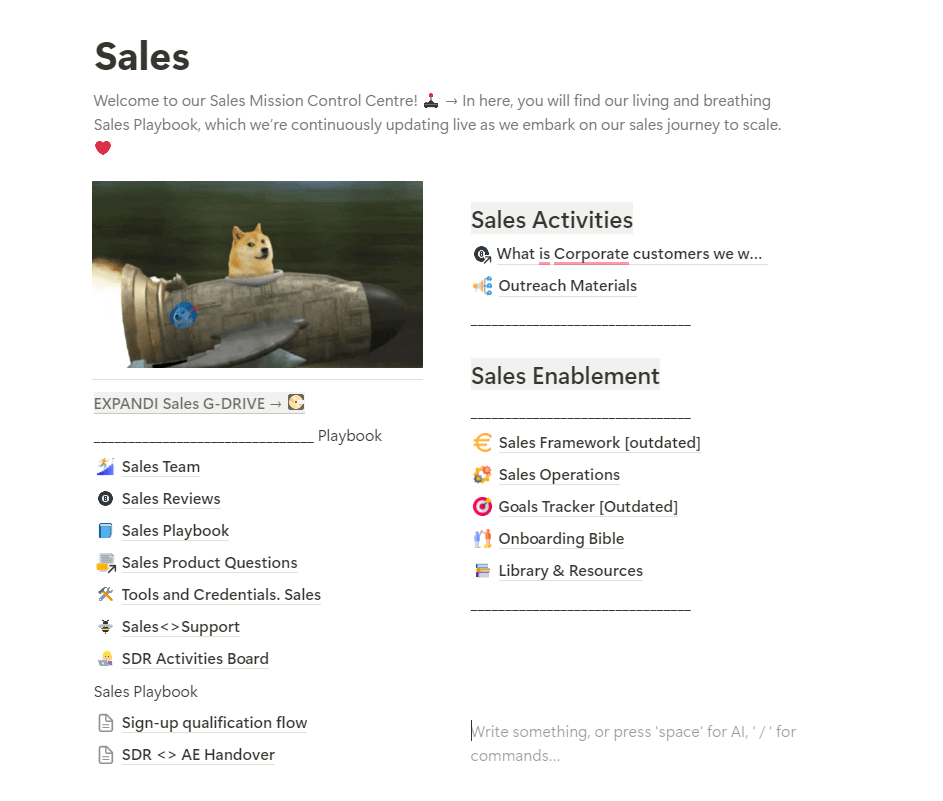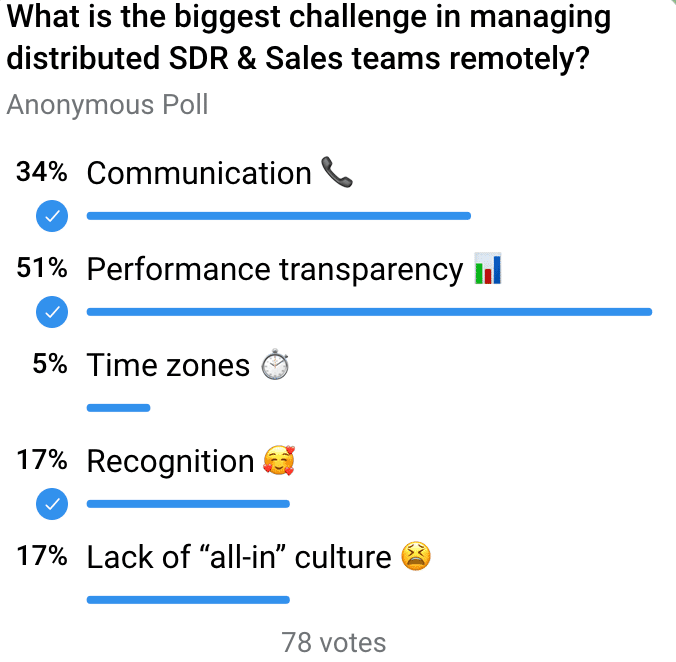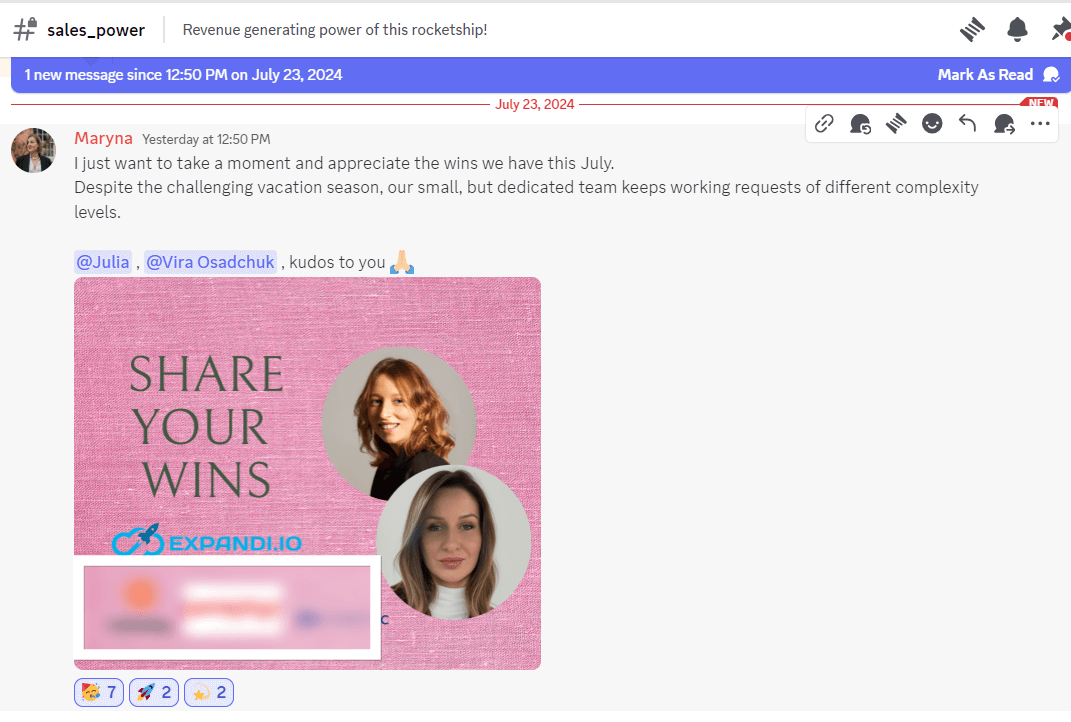How To Manage A Remote Sales Team [Tips And Tools]
![How To Manage A Remote Sales Team [Tips And Tools]](https://expandi.io/wp/wp-content/uploads/2024/07/how-to-manage-a-sales-team-994x497.jpg)
Your sales team is only as good as how you manage it.
How they perform in sales calls, meetings, and whether or not they’ll hit your KPIs is all based on your management.
There are multiple reasons why remote SDR and sales management is not easy.
But recognizing these challenges and keeping focus on the actual goals will help you to effectively overcome these challenges or cope with them on a high level.
Which is exactly what we’re going to cover today.
By the end of this guide, you’ll know how to:
- How to manage a sales team remotely: Top 3 challenges you need to know before getting started
- 5+ Proven tips to manage a successful sales team
Let’s begin!
Understanding The Challenges Of Managing SDR And Sales Teams Remotely
Any SDR or sales manager should keep in mind that there are 3 main focus areas for them when working with distributed teams:
- Hiring, onboarding, and internal knowledge sharing.
- Compensation and incentive plans.
- Career development plans.
People need to feel the progress and development as sales professionals and these areas should be always prioritized if you want to build an outbound sales team.
Let’s take a look at how each of these works and how to overcome them in detail.
1. Hiring, onboarding, and internal knowledge sharing across remote sales team

Ensuring you have the right talent is crucial.
If you want your sales team to thrive, you need SDRs that have the right skills and fit into your culture, while effectively handling their duties.
When going through the hiring process or sales outsourcing remotely, be sure to consider your:
- Virtual interviews: Conduct multiple rounds of virtual interviews to evaluate candidate skills, experience, and cultural fit.
- Assessments: Implement skill assessments and practical tasks relevant to the role. These can include sales pitch presentations, recording a personalized Loom video, sales exercises (e.g. how they would respond to a prospect in a specific scenario), and more.
- Soft and hard skills: Look for qualities such as communication skills, adaptability, teamwork, and more. On top of that, you also need hard skills relevant to your company. Such as knowledge of specific sales software (e.g. your CRM systems) and industry-specific expertise (e.g. B2B SaaS sales).
Even the best sales leadership skills can only take you so far if the team you’re managing is disorganized and not the right fit for your company.
2. Your compensation and incentive plans
People love to be recognized for their efforts.
This should align with the culture you develop in your team.
So, your sales compensation plans should be centered around healthy, and achievable KPIs, and your incentives should drive the right behavior further.
For more info on that, see our full guide on motivating sales teams.
Here, you should also consider:
- Compensation plans: Design plans that are fair and transparent. Include a base salary, commissions, and bonuses tied to performance metrics. Make sure your sales team knows all this info and can access it at any time.
- Incentives: For further incentives, implement spiffs to motivate top performers and B-players to improve. Aim for a healthy, competitive environment across your sales team.
- Recognition programs: For further transparency, develop format recognition programs to celebrate achievements and milestones internally. This can be publicly acknowledging someone to boost morale, having a dedicated Slack channel, and more.
3. Career development plans
In any sales team, there are A, B, and C players. Along with individualists and team coaches.
A career development plan is a great way to help prolong the career cycle for sales roles and help people feel recognized.
You can do this through:
- Development plans: Create personalized development plans that include goals, training programs, and regular sales progress reviews. This is a great way to show your sales teams what’s something they can look forward to.
- Recognition: Always acknowledge sales achievements and recognition. Provide opportunities for growth within your company, such as promotions or lateral moves to different departments.
- Mentorship opportunities: Finally, you can also establish mentorship programs for sales team members who want to improve their skills. This fosters a culture of learning and development and helps build strong, supporting relationships within the team.
Some other challenges we’ve found through our LinkedIn polls remote sales teams face include:
- Communications.
- Performance transparency.
- Time zones.
- And recognition.

Finally, here are some stats according to Harvard Business Review that put things into perspective when motivating your sales team:
- Removing quarterly bonuses led to decreasing laggards’ performance by 10%, core performers’ performance by 4%, and stars’ by 2%. Including quarterly bonuses is crucial for maintaining and improving performance, especially for laggards.
- Having a bench player (someone who is ready to step in and take over if an existing salesperson leaves or is unavailable) increases the overall performance of salespeople by approximately 5%. With the greatest increase observed in the laggard group.
- Having no ceiling on commissions led to increased revenue by about 9%.
- Removing overachievement incentives would reduce stars’ sales by approximately 17%.
These are things that you should always be on your mind when considering how you manage your remote sales team.
What are some other things that help you manage the sales challenges mentioned above?
Top 6 Best Practices That Can Help You Better Manage Remote Sales Teams
Managing a sales team, let alone a remote one, is no easy task.
That said, here are 6 proven tips and best practices that can help you get the most out of your team.
- Having a dedicated, centralized Slack channel for your team.
- Meaningful 1-on-1 meetings.
- A process for sales reports and processes.
- Monthly and quarterly review meetings.
- In-person team building for morale.
- HR-facilitated performance reviews.
1. Dedicate Slack channel
It’s always a good idea to have a dedicated and centralized base for instant communication.
Whether it’s Slack or Discord.
You need dedicated channels where you can:
- Share updates.
- Celebrate achievements.
- Keep the team connected.
- Ask questions.
- And more.
Make sure to also have fun, non-work related channels (e.g. for memes) to boost morale and maintain a positive atmosphere.

2. Meaningful 1-on-1s
One meaningful framework you can adapt is from the book The Coaching Habit.
This framework is designed to be straightforward and effective, focusing on a series of simple yet profound questions to better understand your sales teams’ challenges and provide targeted support.
Here are some key questions to ask to do just that:
- What’s on your mind?
- Is there anything else?
- So what’s the real challenge here for you?
- How can I help?
- What was most useful in this 1-on-1?
With this framework, you create a structured yet flexible approach to address concerns but also foster a culture of improvement.
3. Reports and processes
You need a clear dashboard that combines all the KPIs your team is focusing on.
These dashboards provide transparency, track performance, and align team efforts with organizational goals.
Here’s a detailed breakdown of the three main categories of dashboards and their components:
| Progress analysis | Management alignment | Individual dashboards |
| B2B progress over time. | Leaderboard pipeline. | Dashboard for Sales Rep #1. |
| Close losts analysis dashboard. | Sales achievement quarterly dashboard. | Dashboard for Sales Rep #2. |
| Referencable customers via criteria. | Weekly meetings booked pipeline. | Dashboards tracking metrics for account executives individual performance. |
| Activity dashboard for Sales (track prospecting, activity, touchpoints). ‘Clean my room’ |
4. Monthly and quarterly review meetings
Conducting regular review meetings with your sales team is essential for maintaining alignment, fostering communication, and ensuring consistent progress.
Here’s what should be going on in these meetings:
- Review progress: Focus on short-term goals and achievements. Evaluate the past month’s performance, including sales targets and KPIs met, pipeline growth, and any immediate challenges faced.
- Discuss insights: Encourage team members to share their own insights and experiences. This can include successful sales strategies, market feedback, and any obstacles they faced.
- Share observations: Managers and team leads should provide their perspective on the sales team’s performance, highlighting areas of strengths and opportunities for improvement.

5. In-person team buildings
Remote work offers a ton of advantages.
But if you want to promote interpersonal relationships, trust, and overall a stronger sense of togetherness – in-person team building is the way to go.
Don’t overcomplicate this.
- Consider doing in-person meet-ups 2 times a year.
- Consider what your team likes more (e.g. swimming or skiing). You can even use polls to give the team a say.
- Focus on activities that improve communication and motivation.
- In-person team-building activities include retreats, workshops, outdoor activities, social events, and so on.
6. HR-facilitated performance reviews
Here’s how you can set up HR-facilitated performance reivews:
- Follow a structured process.
- Use performance management tools like Lattice to streamline the review process with templates, progress tracking, and feedback loops.
- Set clear criteria and define evaluation metrics for your sales team like sales targets, customer feedback, and adherence to processes.
- Implement 360-degree feedback loops to gain thoughts from colleagues, peers, and other sales members for a comprehensive overview.
- Maintain regular review cycles
- Conduct monthly or quarterly reviews for continuous monitoring and timely feedback.
- Conduct annual reviews to evaluate long-term performance and future goals.
- Goal setting and development plans
- Set SMART goals (specific, measurable, achievable, relevant, and time-bound.) aligned with organizational objectives. For example, see our guide on effectively measuring lead generation.
- Use development plans to create personalized plans including training, mentorships, and resources for skill development and growth.
Where To Go From Here
Sales leadership doesn’t just naturally come to you.
While figuring out how to manage a sales team, especially remotely, on the go seems challenging, it’s not impossible.
And hopefully, the above challenges, tips, and best practices help.
Remember, the next time you’re booking a meeting with your sales team, don’t focus on abstract concepts such as “booking more meetings”.
Instead, discuss exact KPIs, challenges, and how to boost your sales metrics within a specific timeframe.
Use SMART goals, look at your bigger, long-term sales numbers, and reiterate as you go.
Another important thing to consider is the sales tech stack you use.
After all, with the right sales tools, outreach becomes a breeze.
You don’t have to send manual follow-ups and you can just understand your sales performance instantly in one place with internal dashboards.
That’s where Expandi comes in.
Expandi is like a personal SDR that works for you 24/7.
All you have to do is set up the targeting and templates. From there, it’ll start sending personalized connection requests, follow-ups, and more on behalf of you.
Or, you can onboard your sales team and start reaching your leads at scale fully automatically.
Launching your first campaign takes around 15 minutes. And you start seeing results in under 24 hours.
So, you can claim the free, 7-day Expandi trial and the trial will more than pay for itself as long as you get one paying client.
Only the best strategies will bring the best results
New articles straight to your inbox



